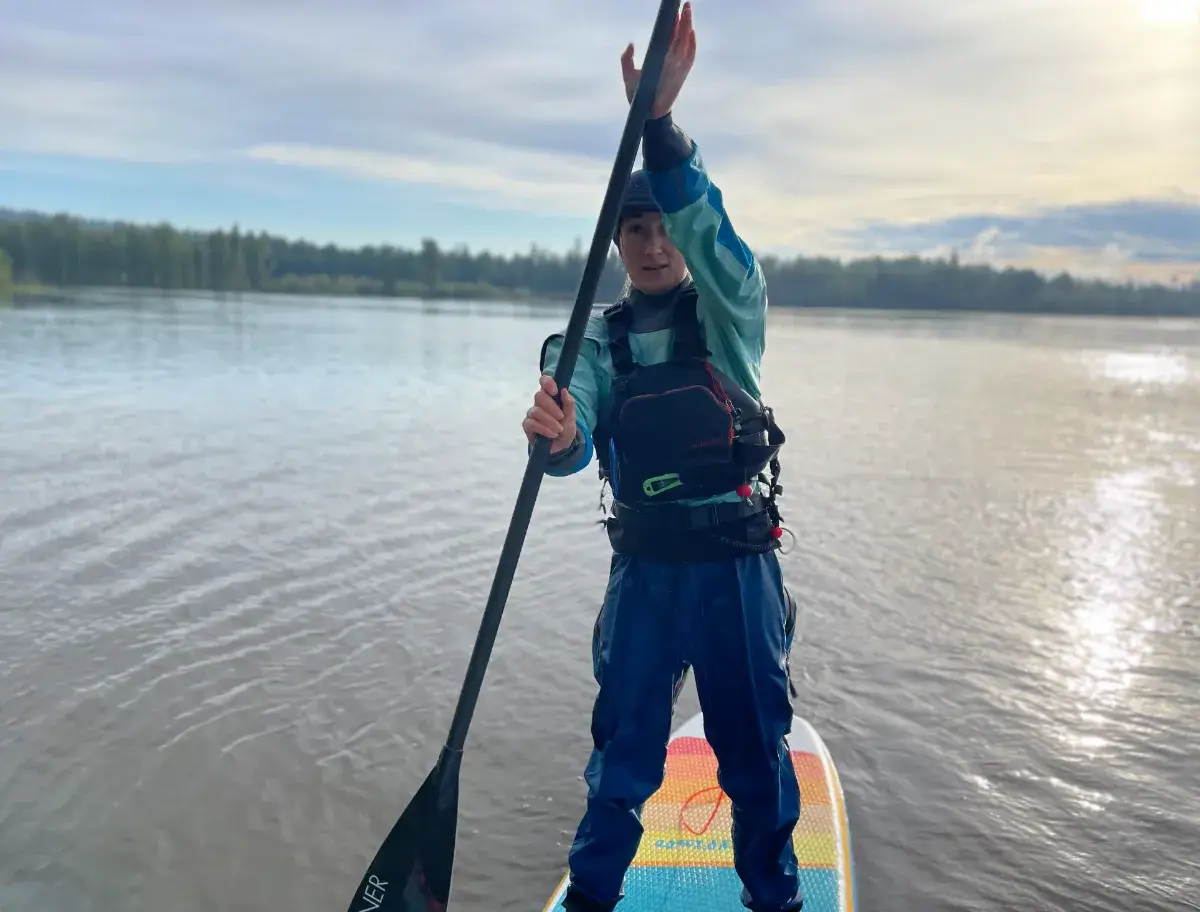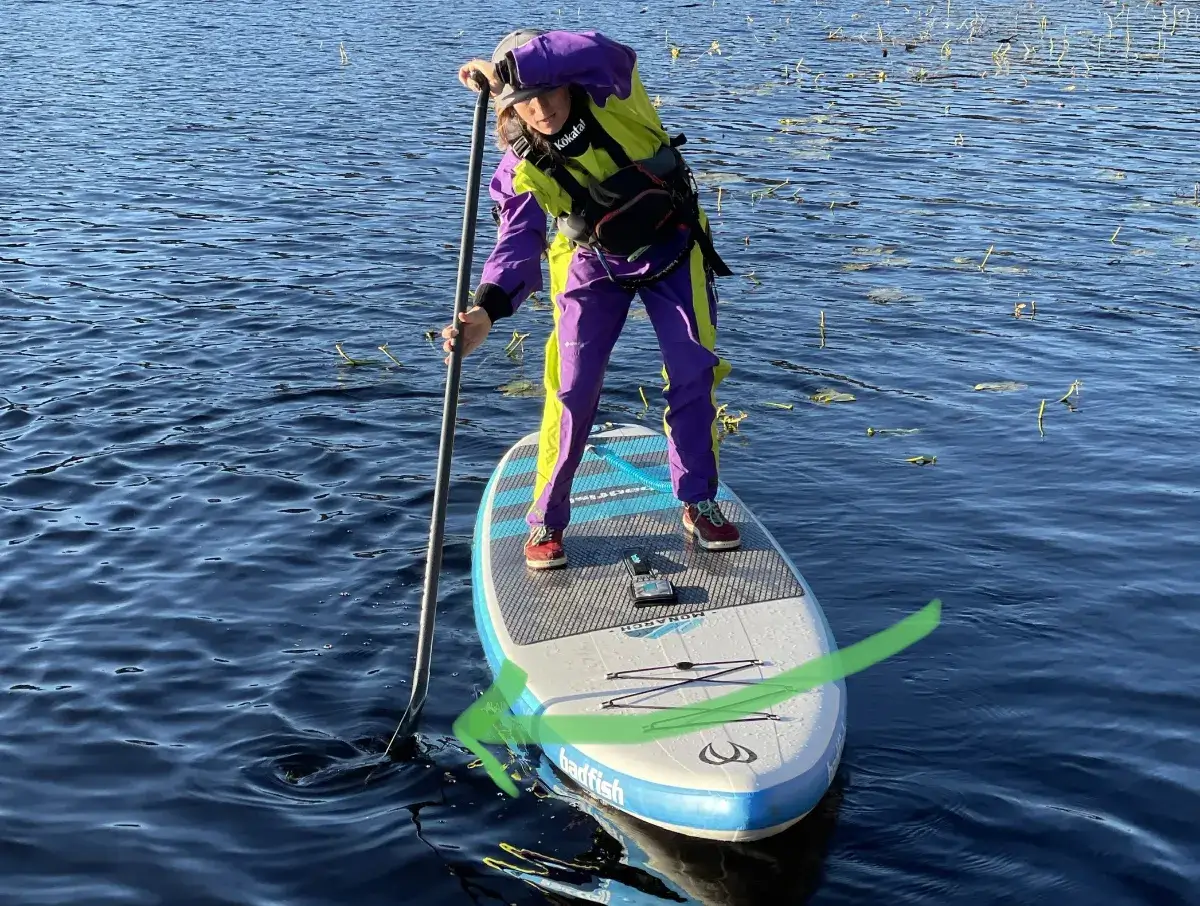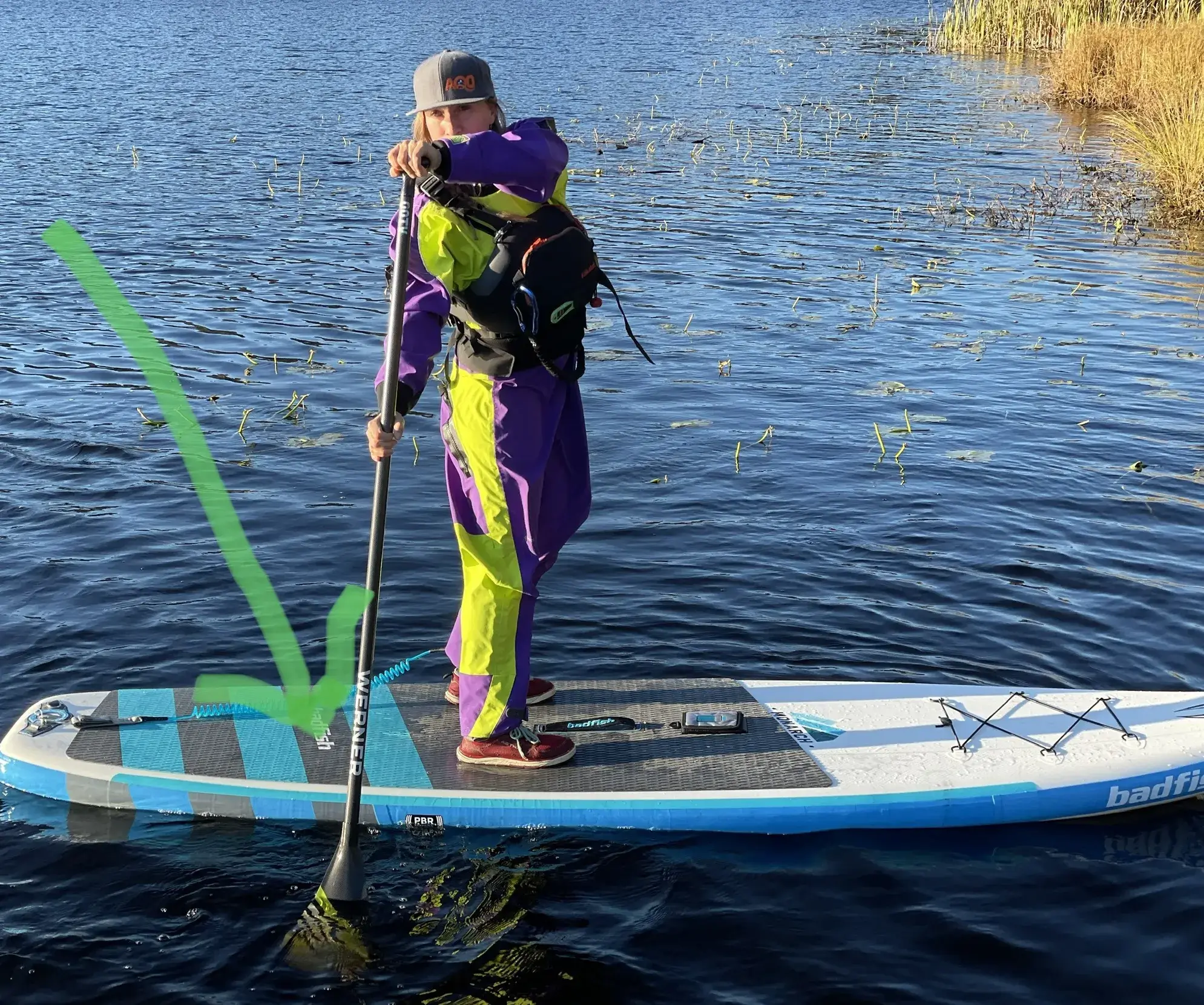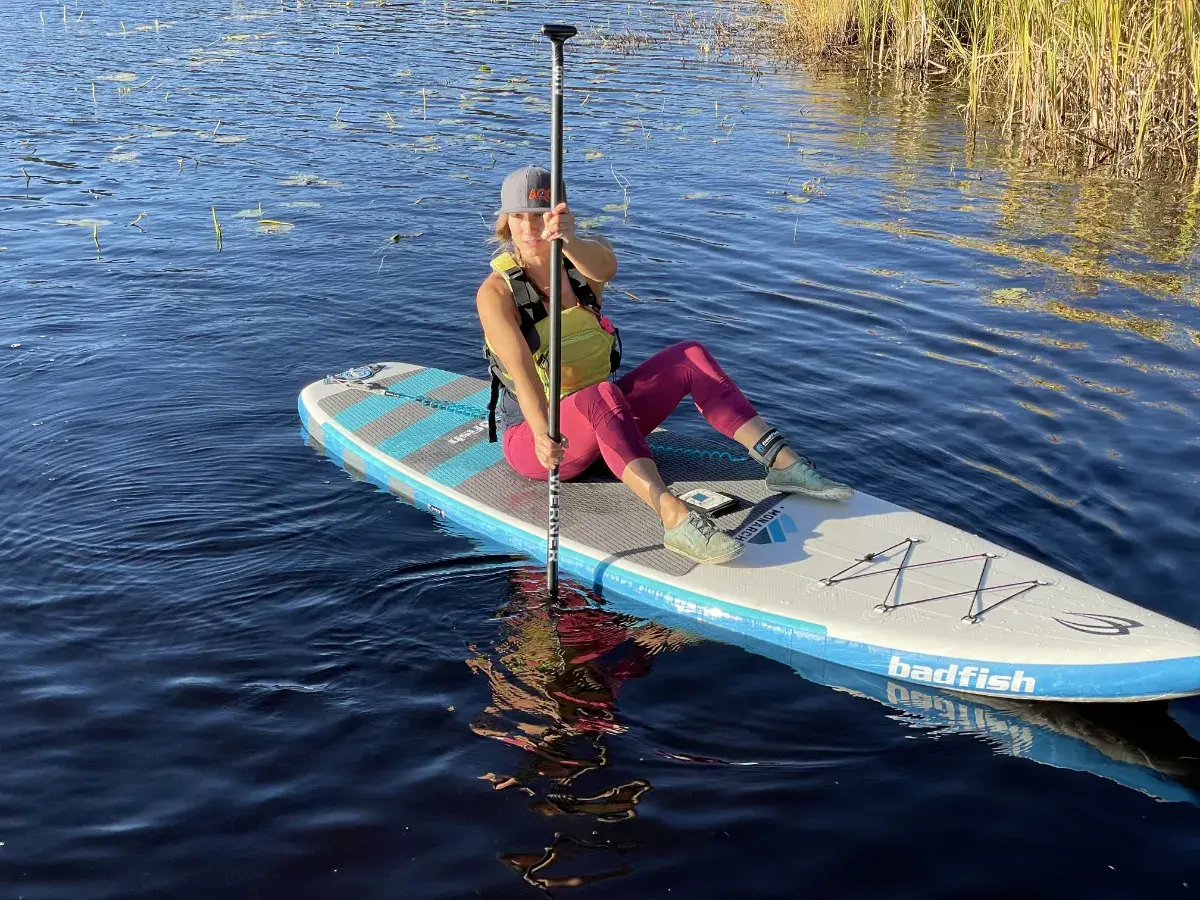Switching paddling hands effectively while paddleboarding can have big benefits while racing, river paddling, touring and even on a Sunday afternoon paddle.
When racing, no paddleboarder wants to lose time when switching sides. On the river you don’t want to be caught off guard awkwardly while trying to exit an eddy. During long tours, an efficient change helps you keep your paddling rhythm. Fumbling with your paddle on flatwater can cause a paddler to lose balance and end up falling.
Shop AQ Outdoors SUP Collection
Most of all -- getting caught with your hand off or awkwardly on the paddle could cause an injury, so let’s look at how it’s done.
Switching Hands and Paddling Sides for SUP
The hand switch takes place in the recovery phase of the paddle stroke, this is after the release and before the catch. It is the time that the paddle is out of the water.
First part, find your “box”, the ideal hand positioning.
On the paddle, use tape to mark where your shaft hand should be. When switching paddling hands some paddlers lose their placement of their hands.
What Your Hands are Doing During a SUP Hand Switch
The t-grip hand comes off the paddle first and is placed under the shaft hand.
Using the shaft hand’s palm, slide it up the remaining distance to the t-grip.
These steps are done in this order to limit the amount of time where there is only one hand on the paddle, hence the palm slides up the shaft.
The other benefit to keeping some contact with the shaft of the paddle is at any point in time the paddleboarder can grasp the shaft again and engage in whichever paddle stroke is needed. This can be seen at times during professional racing where a paddler doesn’t quite get to the T-grip before they get to the catch of their next forward stroke.
Timing the SUP Handswitch with Body Movement
As the blade of the paddle is released from the water the hand switch begins. The shaft hand brings the paddle up and over midway across the board. During this motion the t-grip hand is released and then grasps below the shaft hand as the paddle reaches centre.
While setting up for the reach, the palm of the shaft hand will slide up towards the T-grip. The hand should reach the T-grip just before the paddler begins the “catch”.
Hand movement and timing with the paddle stroke can take some practice in order to get a clean (not splashing) catch on the new side.
Switching Hands and Paddling Sides for SUP Closing Thoughts
Yes, a paddler will lose a moment of time when switching sides. Being effective and efficient can minimize the amount of time lost and helps to prevent injuries. Having it dialed in on flatwater means your hand positions won't be distracting you while trying to learn about paddling on the river or winning a race.
Take the time to practice. Switch hands from a forward stroke to a forward stroke. Switch hands from a sweep stroke to a forward stroke. Switch hands and alternate from one paddle stroke to another.
“Dreams don’t work unless you do”
Kimberley Kenyon
Badfish Team Athlete
Kokatat Team Athlete
AQ Outdoors Whitewater SUP
Advanced and River 1 SUP Instructor Paddle Canada
@borntoboard.ca
Shop AQ Outdoors SUP Collection
AQ Outdoors Contact
Edmonton: (p) 780 463-4892 (e) info@aquabaticsedmonton.com
Calgary: (p) 403 288-9283 (e) info@aqoutdoors.com





























































